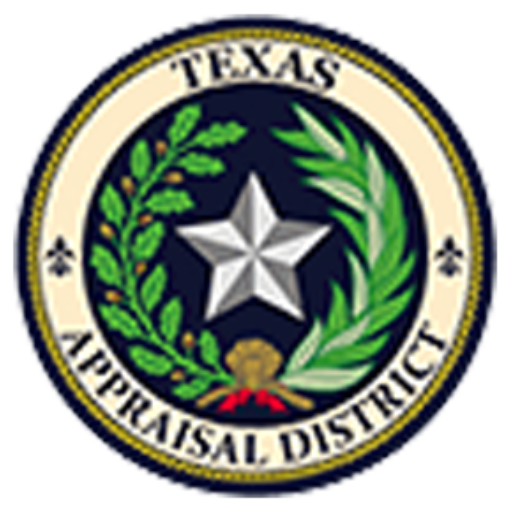Mission Statement:
To provide market value appraisals of all taxable property in Wilson County in a fair and equitable, and cost effective manner, and to provide services and assistance to the public and taxing jurisdictions.
Wilson CAD Responsibilities:
The Appraisal District’s primary responsibility is to develop an annual appraisal roll for use by taxing units in imposing ad valorem taxes on property in the district. Wilson CAD is governed by the Board of Directors, who is primarily responsible for the hiring of the Chief Appraiser as well as approving the annual budget.
A Brief History
Prior to 1979 the Texas Constitution required all property owners to pay property taxes. Exemptions were few and with the exceptions of Government property, along with that belonging to churches, schools and other properties exempted by federal law, most other owners were taxed on property including automobiles, household furniture, stocks, bonds and cash in the bank. Each tax agency in Texas could have its own tax office if desired and tax offices proliferated with most cities, school districts and numerous special districts establishing independent offices. Accordingly, Texas had over 3,000 separate tax offices, each following its own standards and local practices. Properties were often listed on different taxing entities rolls at dramatically different appraised values and assessment ratios were also applied with no uniformity between entities.
In 1979 the 66th Texas Legislature, reacting to a chronic and growing problem of inequitable and unfair taxation, passed new legislation in Senate Bill 621 requiring that a centralized agency be established in each county for the purpose of appraising property for ad valorem tax purposes. These agencies, called “Central Appraisal Districts” consolidated the appraisal function of all taxing units into one office in each county and were organized to ensure that property taxation was fair and equitable as well as accurate. The Central Appraisal District (CAD) appraises each property in the county. Individual taxing units use those values to calculate tax liabilities in their jurisdiction. Each CAD is headed by a chief appraiser who manages staff, prepares budgets, administers applications for exemptions and oversees the day-to-day district operations. The Tax Code prescribes appraisal standards and appeal procedures and ensures regular review of each appraisal district by a state agency.
Each year our agency is audited, including both our financial operation and our appraisal effort. Independent auditors conduct the financial audit. The Comptroller’s Property Tax Assistance Division conducts a performance audit of our appraisal effort to determine the accuracy and equity of that effort.
The Wilson County Appraisal District would like to clarify how the Property Tax System works. We understand the current market has many property owners confused, upset and frustrated about their appraised value.
How does the property tax system work?
There are three main parts to the property tax system in Texas:
- An appraisal district in each county sets the market value of property each year. That’s the price it would sell for when both buyer and seller seek the best price and neither is under pressure to buy or sell.
- A citizen board, called the appraisal review board (ARB), hears any disagreements between a property owner and the appraisal district.
- Local taxing units-city, county, school and special districts-decide how much money they will spend by adopting a budget. Next, the units set tax rates that will raise the revenue (levy) necessary to fund their budgets. The adopted budgets and the tax rates set to fund the budgets determine the total amount of taxes that a person will pay.
VALUE x RATE = PROPERTY TAX
Tax Rate is a rate that when multiplied by the total taxable value will generate a certain amount of levy. If values increase, the tax levy will increase unless the taxing unit lowers its rate.
A TAXING UNIT CAN LOWER THE TAX RATE DUE TO INCREASED VALUE IN ORDER TO NOT INCREASE THE TAX BURDEN ON PROPERTY OWNERS.
How do you ensure you are not paying too much in property taxes?
- Make sure that you have applied for all exemptions for which you may qualify. Exemptions lower your taxable value resulting in a lower tax bill. If you own your home and live there as of January 1, you may qualify for a Homestead Exemption. Owners who are disabled, are 65 years of age or older, or are disabled veterans, may have other exemptions available to them.
- Be Informed as to what other properties are selling for in your area. Values are driven by the market, so the amount of money that other properties similar to yours are selling for has an effect on the value of your property. This is true whether or not you plan to sell your property. The Wilson County Appraisal District collects information about the physical characteristics of all taxable properties. While we try to visit as many properties as possible each year, we are frequently not able to inspect the interior of buildings. If your property has problems, especially if they are not evident from the outside, please let us know.
- If you believe that your value is incorrect, you may protest your assessment. The deadline to file a protest is set by law as May 15. You may protest even though you do not receive a notice of appraised value. .

The appraisal review board may approve the appraisal records if the sum of the appraised values has been determined, of all properties in which a protest has been filed, is five percent or less of the total appraised value of all other taxable properties (referred to as certifying the appraisal roll).Property Tax Code 26.01 & 41.12

